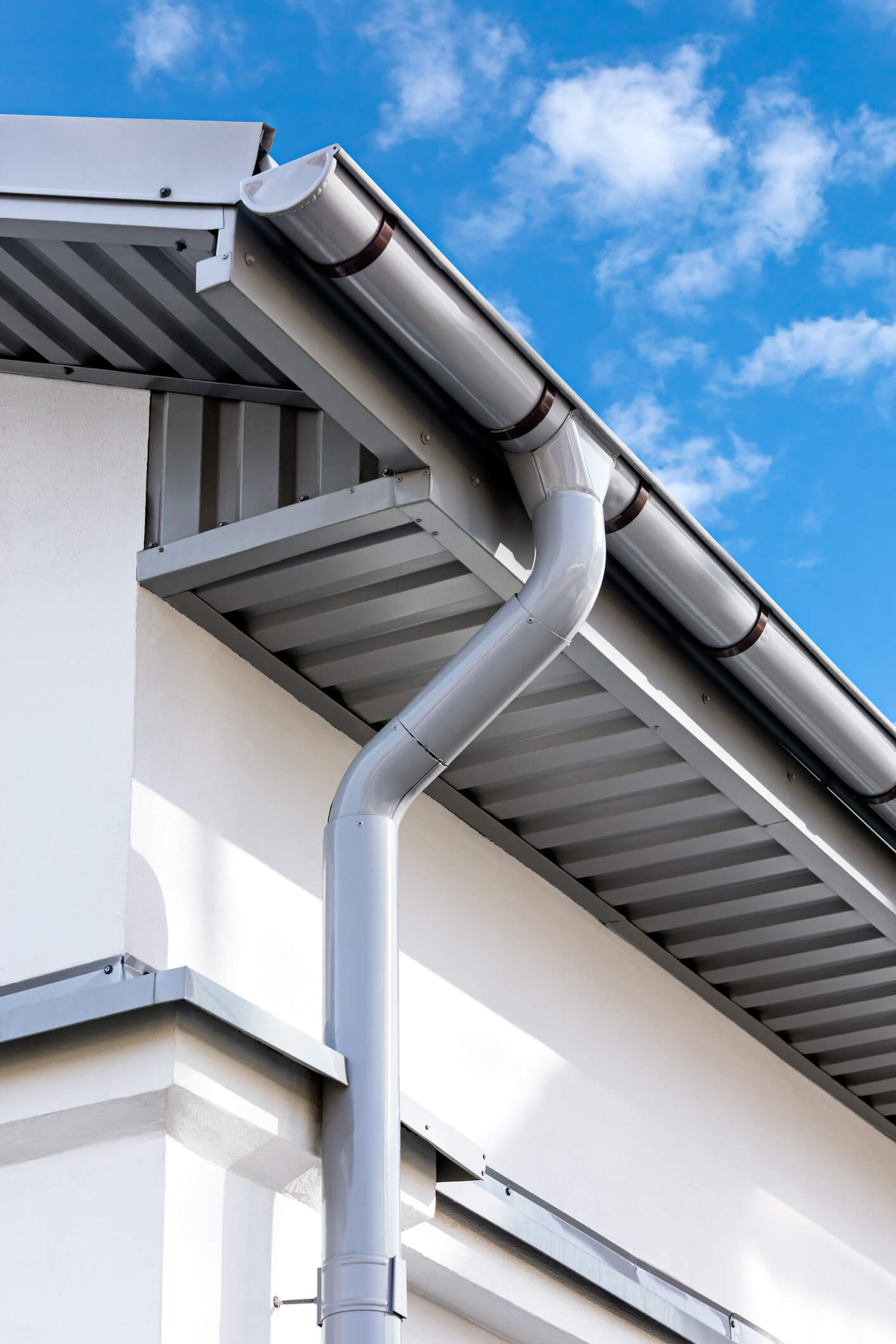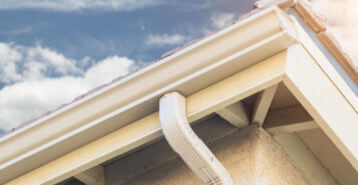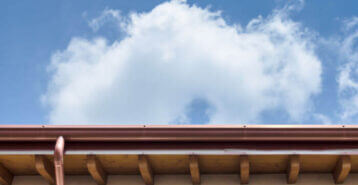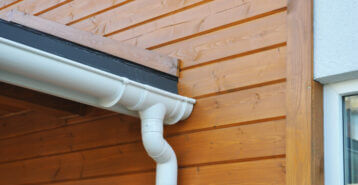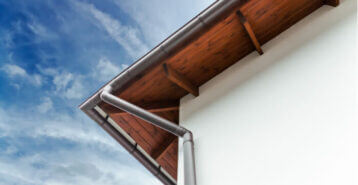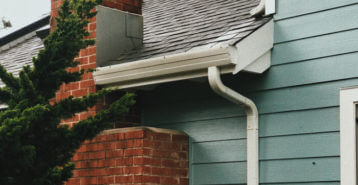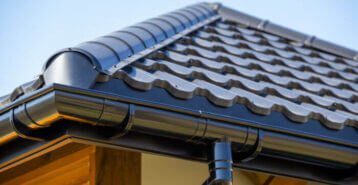Half-Round Gutters: A Guide
If you’re looking to replace or install new gutters, you’ll need to choose a style. Half-round gutters are common in older homes since the modern K-style gutter wasn’t invented until the mid-1940s. While K-style gutters are more popular today, half round-gutters remain a favored choice for historic homes and classic residential designs. This guide will help you understand how these gutters work, along with their costs, benefits, durability, and other important factors. When you’re ready to begin your gutter installation or replacement, Modernize can connect you with licensed, trustworthy contractors in your area.
What are Half Round Gutters?
While K-style gutters can be found in suburban tract homes throughout America, discerning homeowners and those who own homes built in classic architectural styles often prefer the look of half round gutters.
Half-round gutters are shaped like a tube that’s been cut in two. Imagine a half circle with the rounded part facing the ground and the open side pointing to the sky. This gutter style typically has a flat back that attaches to your home’s fascia and a decorative beaded profile on the front side for a bit of added flair.
Half-round gutters are installed along your home’s roofline to direct water away from the foundation. They work in any climate but may not be ideal for areas with heavy snowfall or rainfall, as they hold less water than K-style gutters, even though they drain faster.
This gutter style complements various classical architectural designs, including Art Deco, Victorian, Tudor, Colonial, Tuscany, Cape Cod, Georgian, Craftsman, and upscale ranch-style homes. It also pairs well with brick or natural stone houses.
Benefits of Half Round Gutters
Half-round gutters have a few benefits that cannot be found in other gutter profile styles:
- Moves Rainwater Faster: The round shape and smooth interior transports water quicker than K-style gutters.
- Less Corrosion Over Time: The shape can also help prevent weather-related damage such as rust and corrosion since water tends to flow completely out of the gutter trough.
- Low Maintenance: They are much easier to clean and de-clog than K-style gutters. They do not easily collect leaves and twigs from trees.
Choosing these gutters has some drawbacks. They are less common than K-style gutters, making them harder to source. Installation is also more complex, which can increase costs. Additionally, half-round gutters are shallower, so they hold less rainwater than K-style gutters.
Dimensions and Rainwater Capacity
Half-round gutters, like other gutter profiles, are made in widths ranging from 4 to 8 inches. However, 6-inch wide half-round gutters are the most common size since they are more than capable of handling stormwater in most climates. However, some homes in drier climates may only require 5-inch half-round gutters.

Durability and Lifespan
Material choices for half-round gutter troughs, downspouts, end caps, hangers, and other components include aluminum, galvanized steel, galvalume, vinyl, as well as copper for high-end custom homes. These materials have different properties that play into the gutter’s overall lifespan and durability.
The chart below shows some guidelines on the expected lifespan based on the choice of materials.
| Half Round Gutter Material | Average Lifespan | Average Cost per Linear ft. |
|---|---|---|
| Vinyl | Up to 20 years | $18.63 |
| Aluminum | 20 - 30 years | $18.53 |
| Galvanized steel | 20 - 40 years | $26.83 |
| Copper | 50+ years | $40.68 |
There are many factors that can affect your gutter’s durability, though. Salty coastal air is much more corrosive on metal gutters than the air in temperate inland climates. Regular maintenance to keep your gutters free of debris – so that water never sits in the gutter trough – can also help extend the lifespan of your gutters.
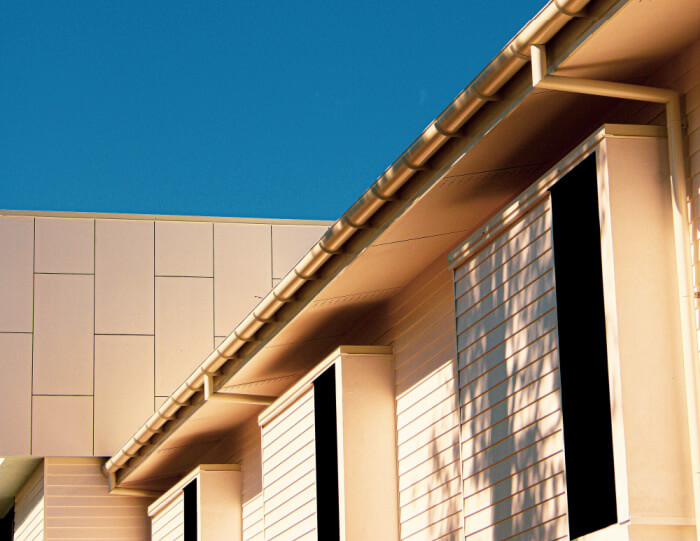
Installation Cost
Materials are a huge factor in gutter costs. Aluminum gutters are less expensive than galvanized steel gutters, and half-round copper gutters are the costliest gutters on the market. Downspouts, gutter guards, splash guards, and other important accessories also will bump up the overall price of your new gutters, but they are necessary components of a complete gutter system.
K-Style vs. Half Round
There are key differences between K-style gutters and half round gutters. K-style gutters are the most popular gutter profile in the U.S.
- Design and Strength: K-style gutters feature a design that offers unmatched strength and rigidity, extending their lifespan.
- Installation Process: Seamless K-style gutters are easy to build and install onsite, allowing for precise sizing for each home. Their flat back makes installation straightforward, as they can be nailed directly to the roof’s fascia boards. In contrast, half round can be more complicated to install.
- Cleaning and Maintenance: The shape of K-style gutters can trap small debris like twigs and leaves, which can impede stormwater flow. This design also makes them slightly harder to clean compared to seamless half-round gutters.
- Rainwater Capacity: K-style gutters are deeper than half round, allowing them to hold more water.
- Pricing: Half-round gutters are slightly more expensive than K-style gutters but are typically more affordable than custom fascia gutters.
Professional Gutter Installation
Compare top-rated gutters pros in your area.
Read real homeowner reviews, explore qualifications, and view promotions. Modernize makes it easy to browse professionals and find one that will be perfect for your project.
